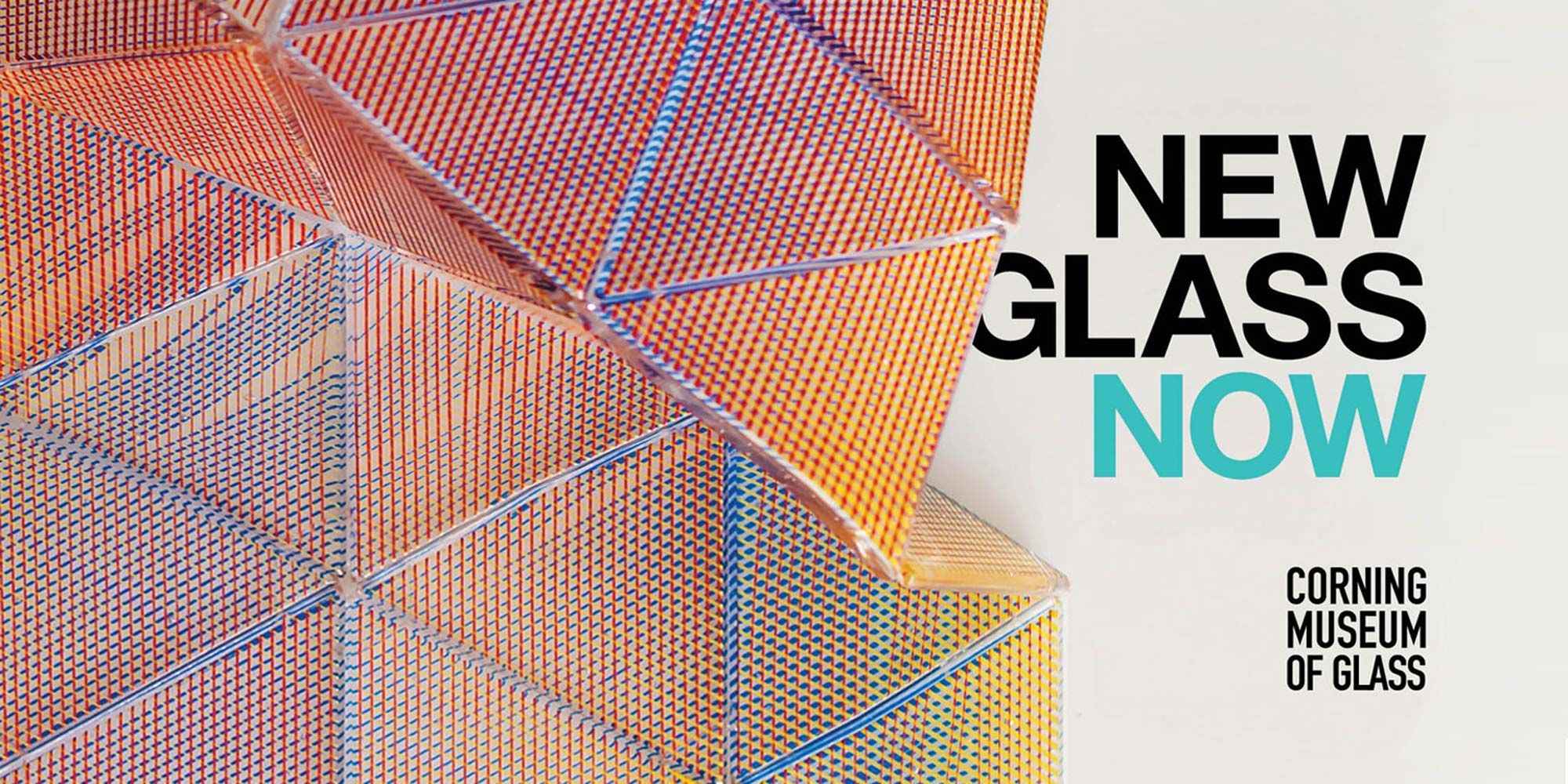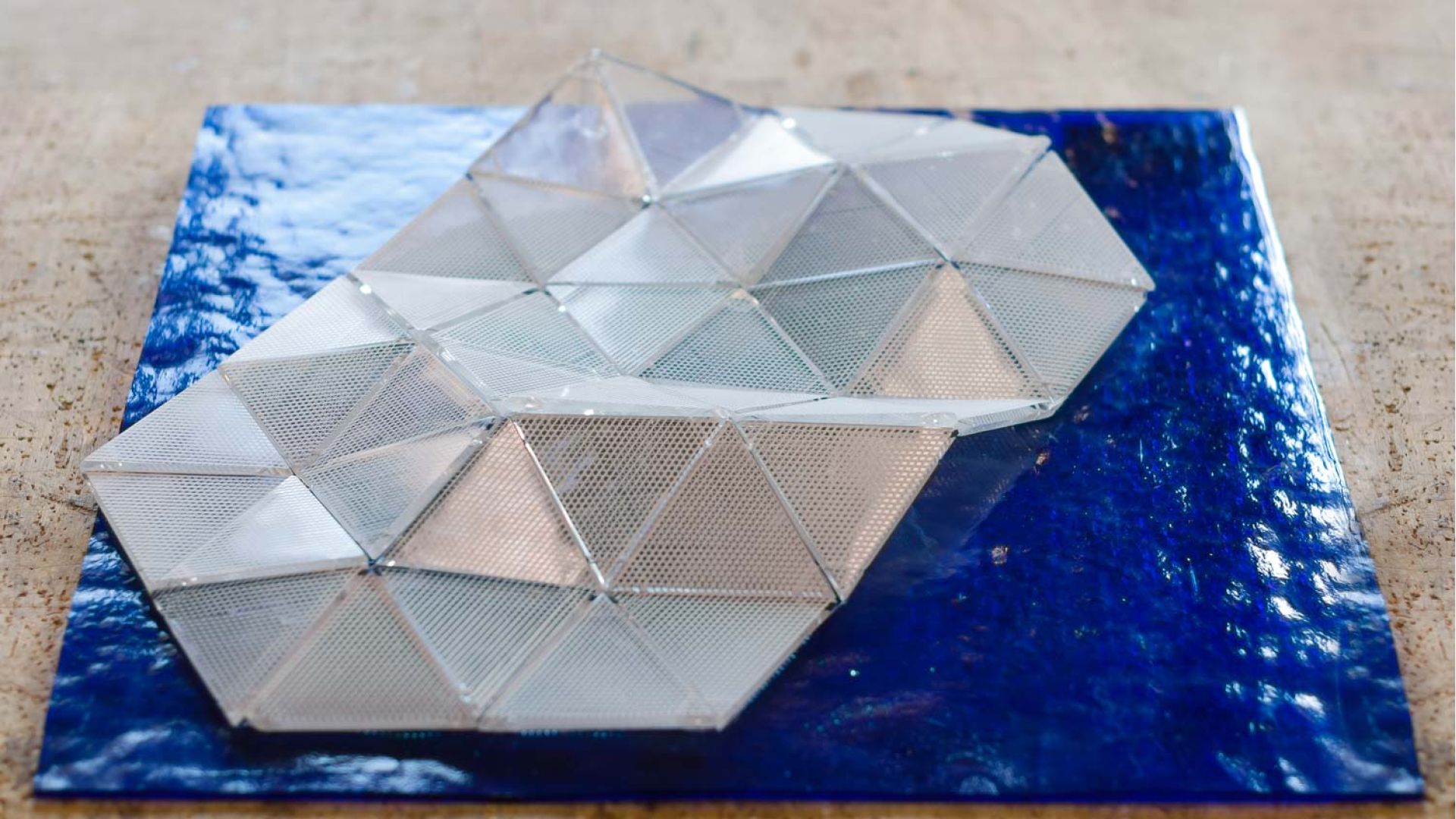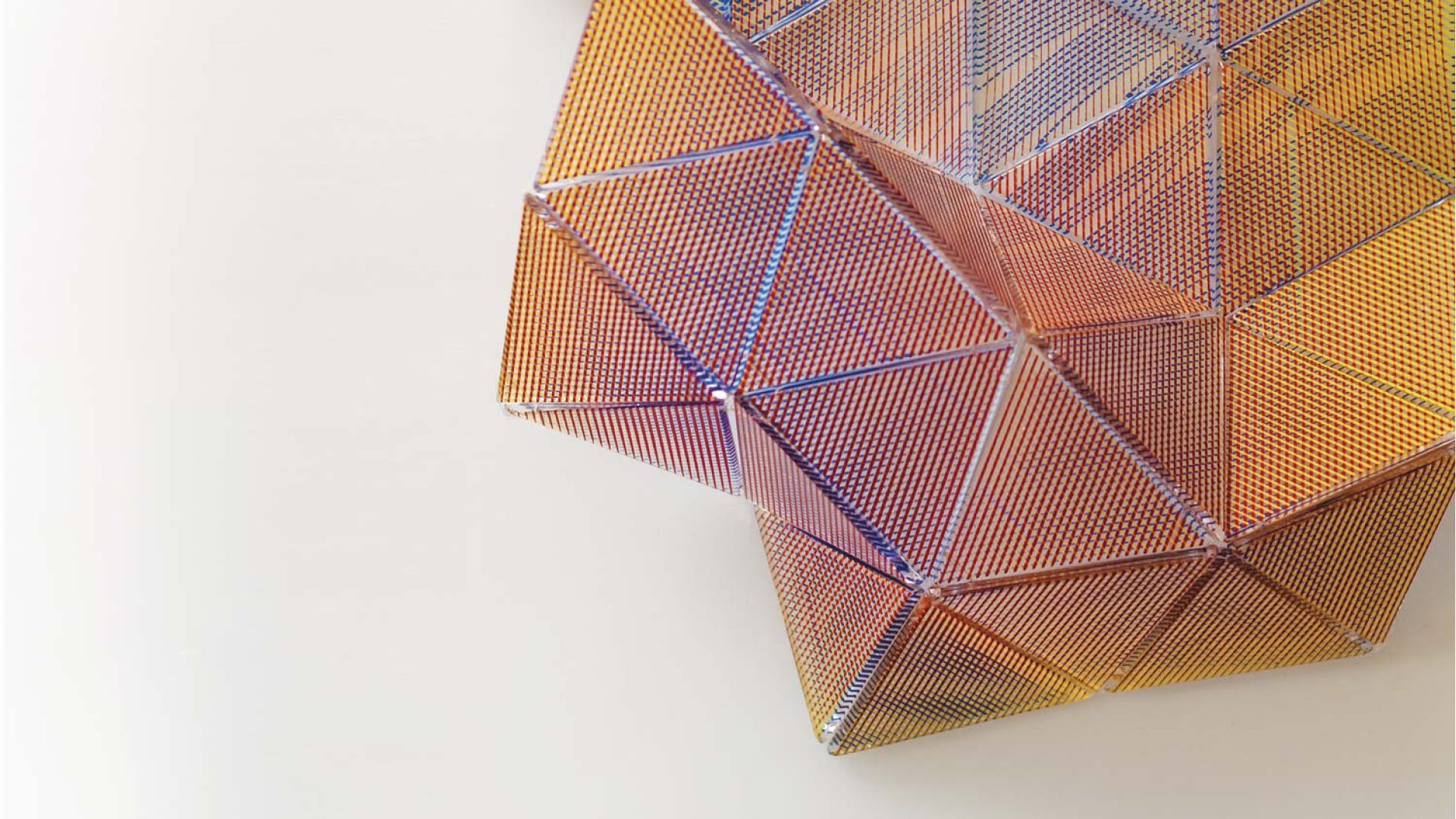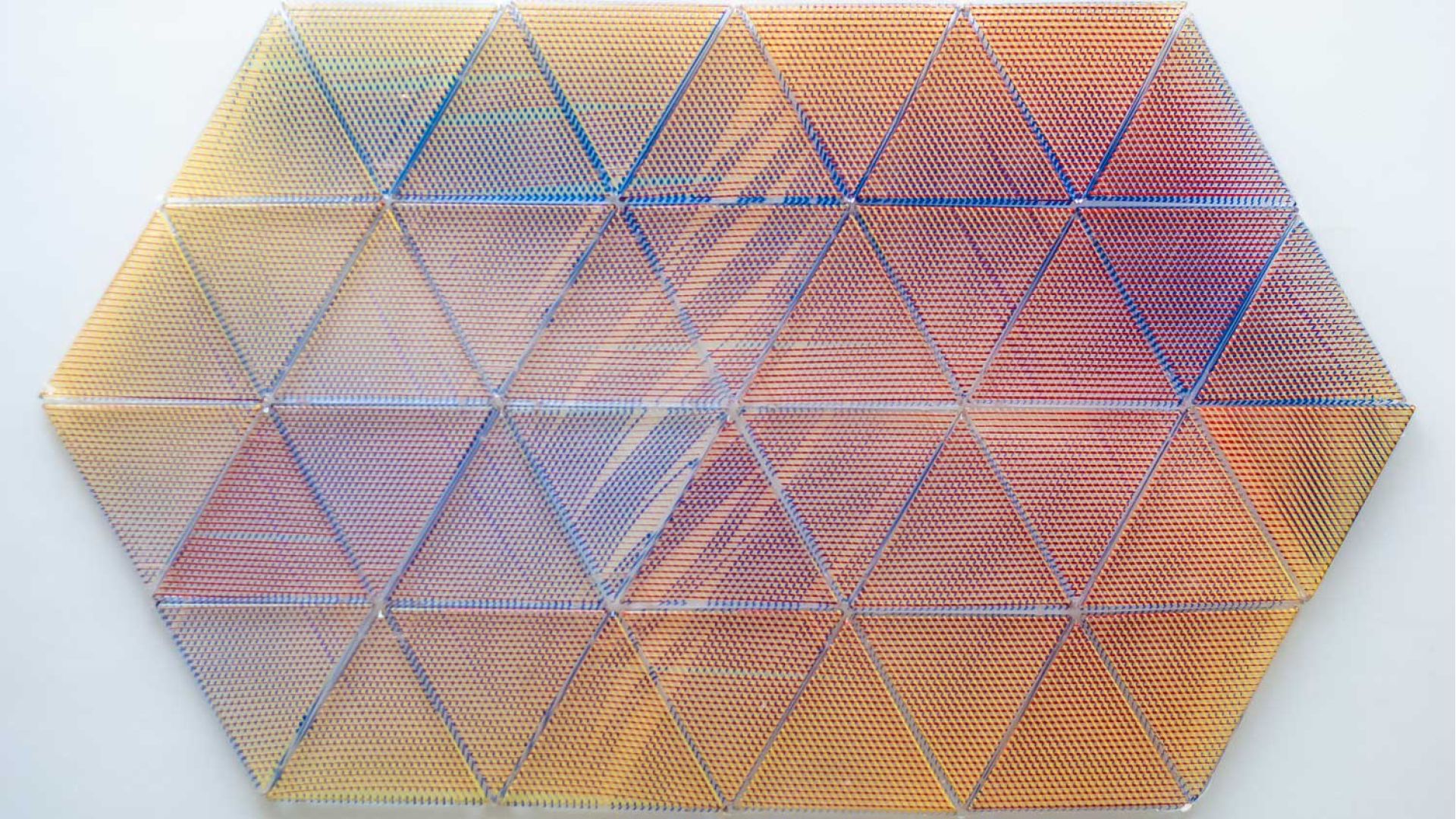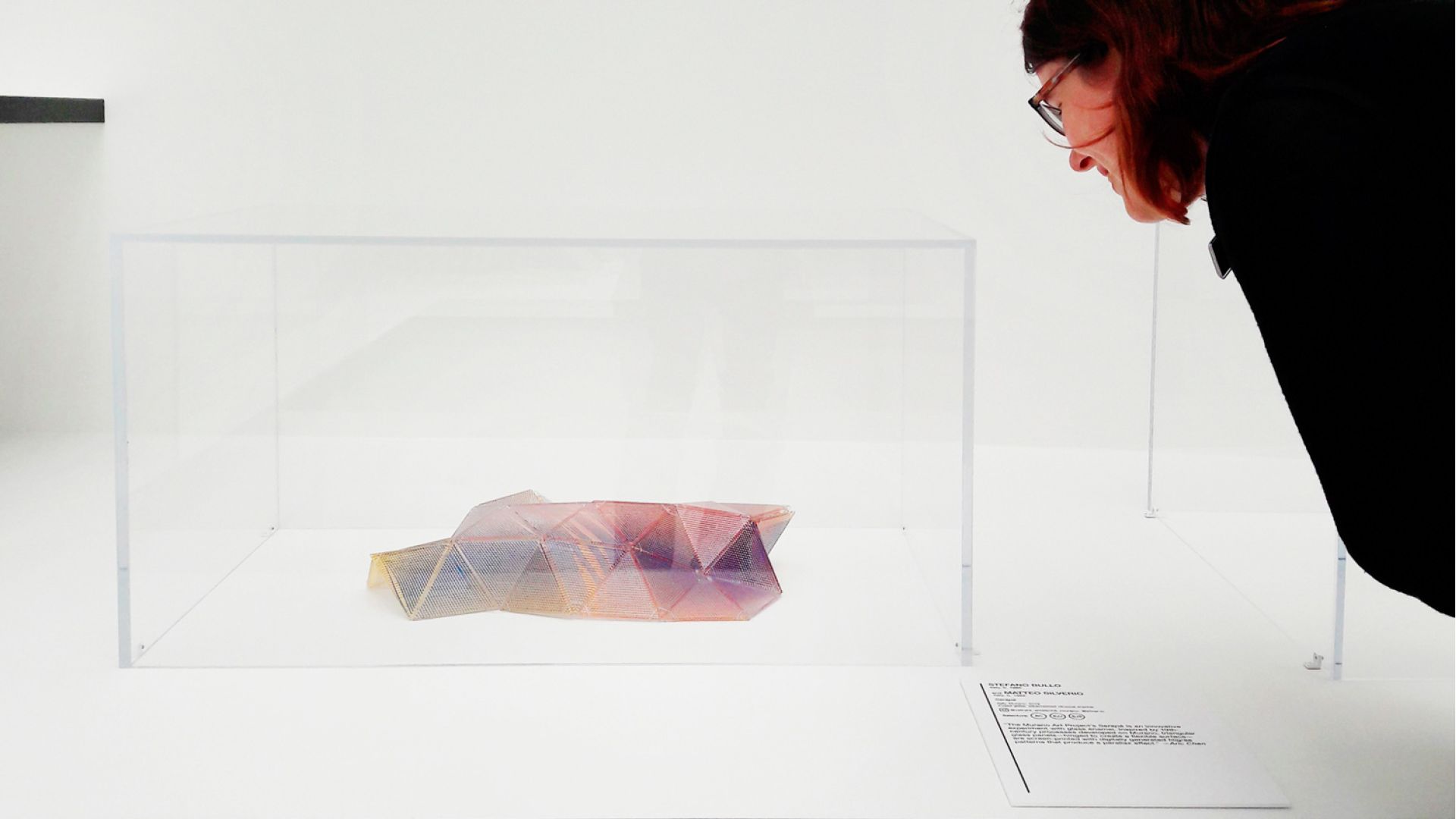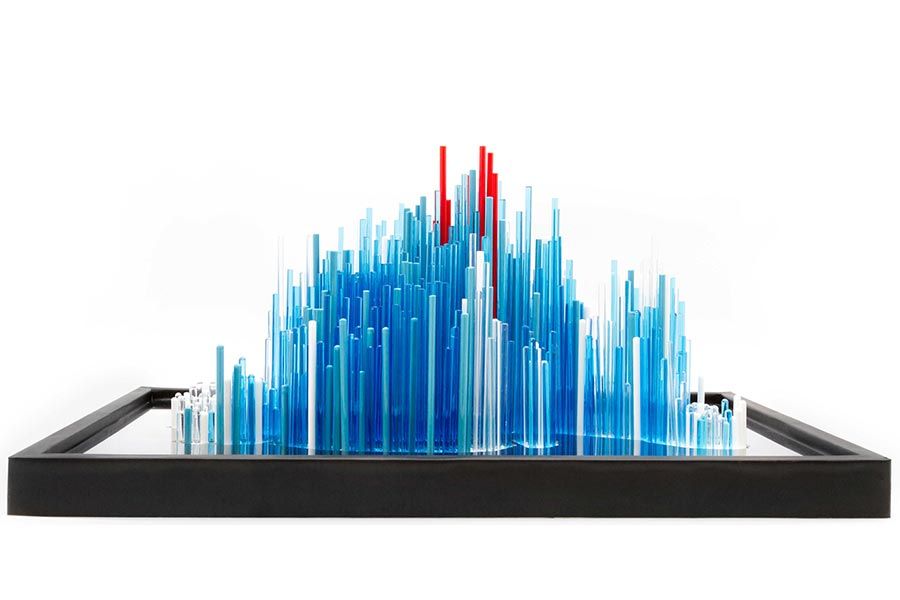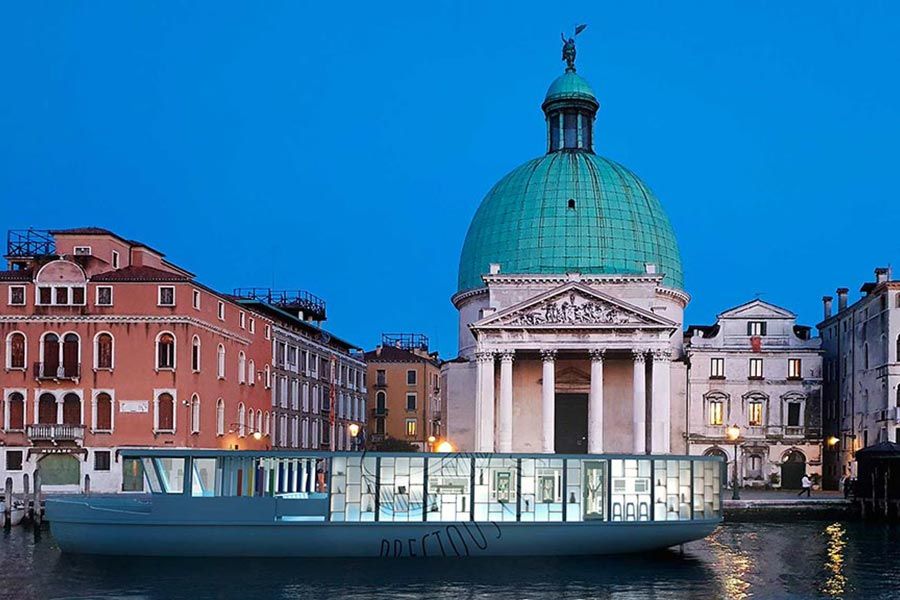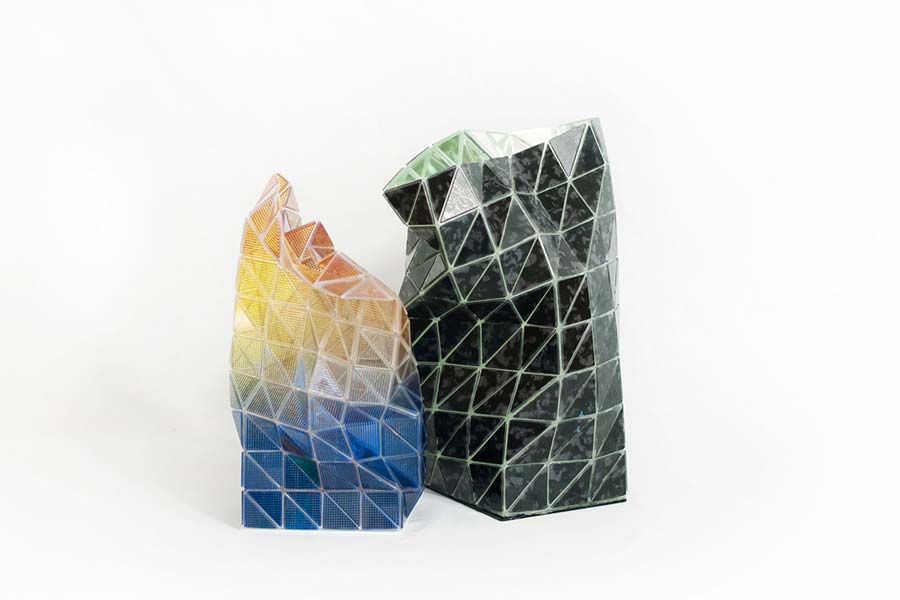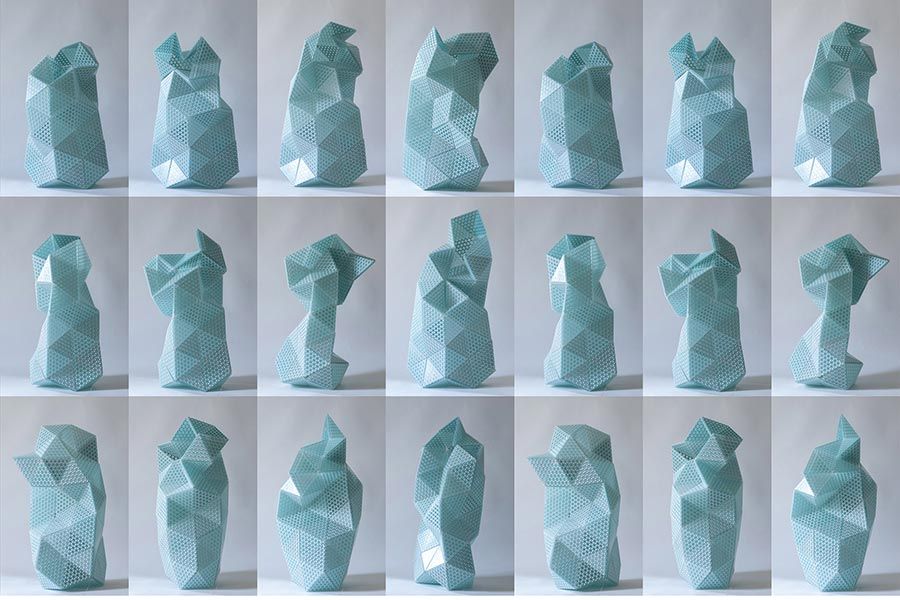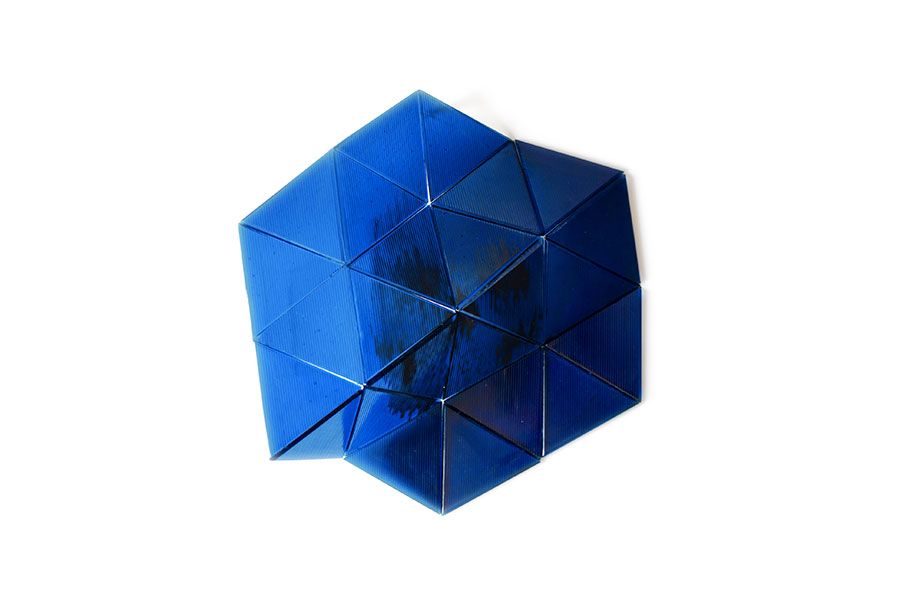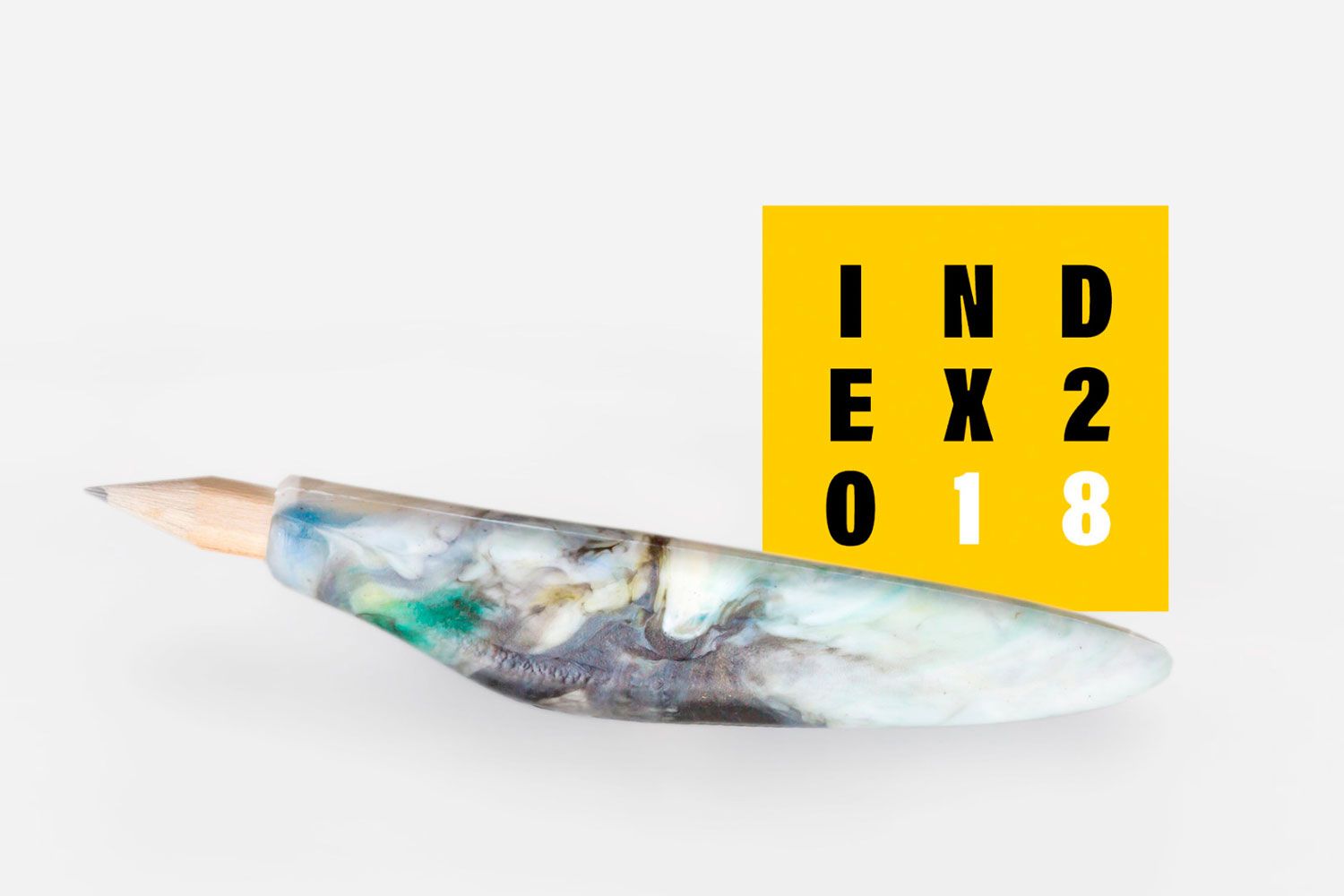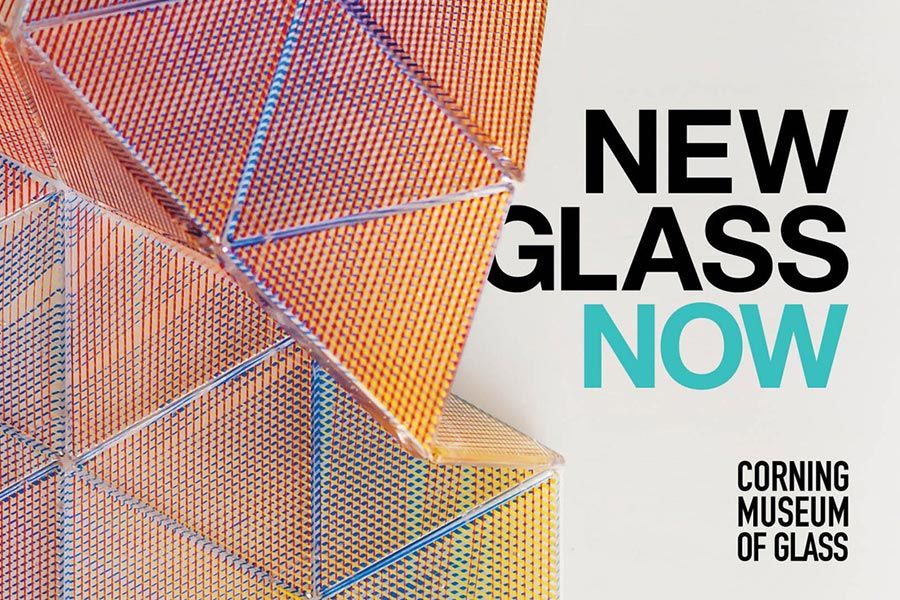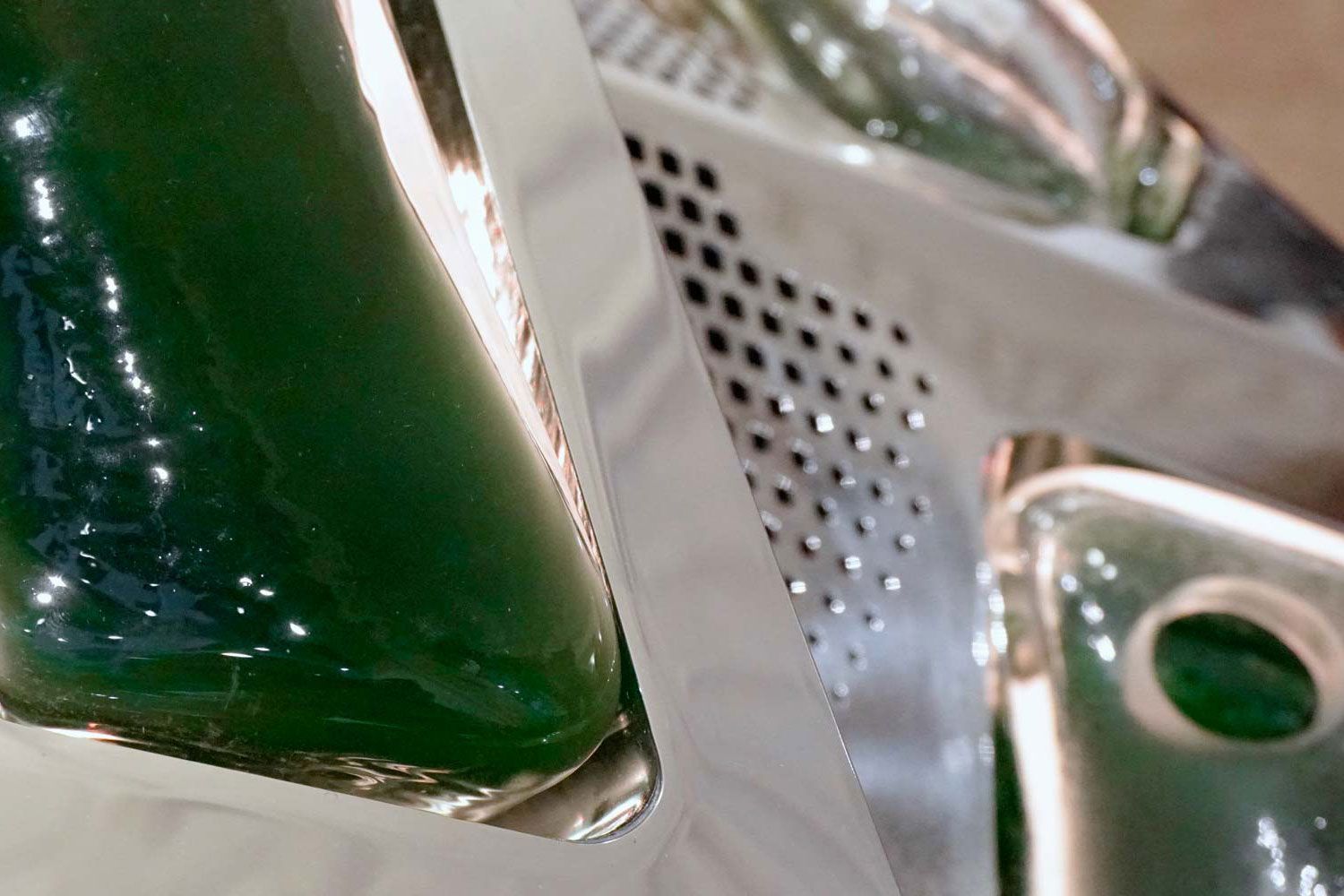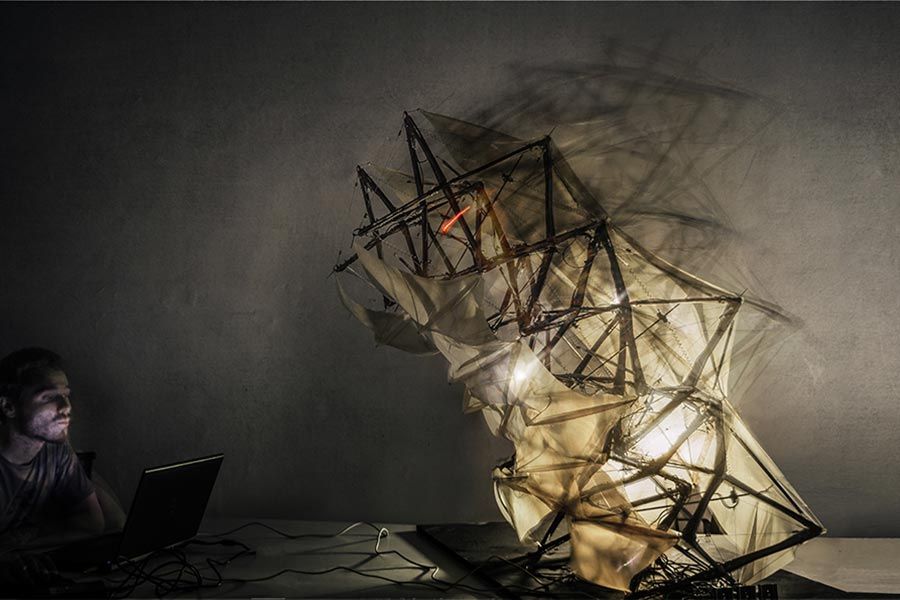SERAPÈ
-
Typology
Research // Media Art
-
Status
Completed, 2018
-
Team
Matteo Silverio
glassmaker: Stefano Bullo, Vetrate Artistiche Murano -
Exhibitions
NEW GLASS NOW! Corning Museum of Glass, New York
-
Publications
New Glass Review, no. 40 (2019) published by The Corning Museum of glass, Corning NY
“Serapè is an innovative experiment with glass as an applied material. Inspired by 19th-century processes developed on Murano, triangular glass panels – hinged to grate a flexible surface – are screenprinted with digitally generated filigree reed patterns that produce a parallax effect”
Aric Chen, New Glass Now Co-curator.
This project is part of a wider research exploration that merges art, traditional Murano craft and cutting-edge digital technologies to develop new craft techniques.
Serapè is a journey to (re)-discover the Murano glass-making tradition from the Middle Ages to today; an historical artistic itinerary to illustrate the birth, development and evolution of the Venetian “rulli” (or “rui”) windows that is composed of hand-made blown Murano glass flat discs.
The process starts from studying significant historical evidence, mainly based on the work carried out by Pietro Bigaglia, who in the mid-nineteenth century used the filigree glass sticks (cane) to create an infinite variety of window “rui” with daring bright colours (for that particular historic period). Merging the wide Muranese know-how with digital innovation, the Serapè project is an experimental artipece that deal with the concept of stained glass windows. Serapè is a flexible glass surface.
The geometrical matrix composition transforms a rigid and unanimated material like glass, in an organic system that can adapt to any ambient condition. The texture on the glass surface (that pay homage to the ancient filigree), is generated from a digital design concept than is then screen-printed on the glass. The use and the superposition of different layers creates a parallax effect on the glass given a further three-dimensional aspect to the geometrical surface.
The basic size of the artwork is 100x30x0.8 cm but the composition can be expanded to any dimension to adapt organically to the space since it takes the shapes of the object is laid on. This could then become a reproducible object that retrieve his uniqueness on the geometrical filigree that is screen-printed on the glass based on the particular customization. Therefore, the proposed solution is one of the experimentations carried out since Serapè can be considered a blank glass canvas system.
